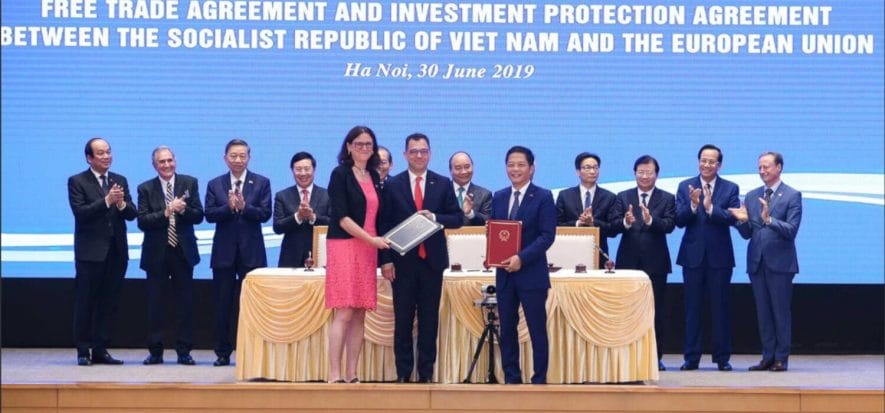The European Union and Vietnam have signed a free trade agreement (EVFTA), which will supposedly enhance the business relationship between the areas. As regards leather industry, Vietnam is a top exporter of shoes and, at the same time, a relevant buyer of finished products.
Times
It will still take a while before they approve formally the deal and make it effective. Negotiations, started in 2012, came to completion in 2018. Last month, on June 30, Cecilia Malmström, European Commissioner for Trade, signed the deal text together with Vietnamese Minister of Industry. European Parliament must approve it now; thereafter, member countries will possibly ratify the deal section about direct investments. As reported by Reuters press agency, the deregulation procedure, with regard to some specific commodity categories, will take place in ten years or so.
The leather business
In 2018, Vietnam (which currently benefits from the Generalized System of Preferences – GSP) reached 16.2 billion dollars by exporting shoes: according to statistics provided by Vietnamese customs officers, 4.66 billion dollars came from exports towards European countries. Conversely, in 2017, according to data supplied by Eurostat, leather (both finished and raw) accounted for around 2% of over 10.6 billion dollars coming from Europe’s exports towards Asian republic.
A tanning opportunity
In 2018, Vietnam proved to be the sixth worldwide market for Italian finished leather. Vietnam bought slightly less than 13 million square metres of made in Italy material, therefore spending 165.8 million euros (more than twice the amount spent by the United Kingdom, more than triple compared to South Korea). In comparison to 2017, as highlighted by UNIC – Italian Tanneries Economic Department, Vietnamese performance increased by 9.2%, in terms of value, and rose by 15.8% in terms of volumes.
Customs duties
For the time being, Vietnam still imposes a 10% customs duty on leather imported from Italy. The only exception is about bovine crust leather (cattle sides) and porcine leather, on which duties are less heavy (5%). As soon as EVFTA enters into force, Italian materials will get easier access to a well-established and expanding market.
Asian feedback
According to the top managers of Lefaso, Vietnam’s leather and leather products association, EVFTA will be an excellent growth opportunity, considering that Vietnam is already playing a leading role in the footwear industry worldwide. For the records, Vietnamese entrepreneurs are not the only ones who will take advantage of it. As reported by the South China Morning Post, a daily newspaper, several shoe manufacturers, based in Beijing, who have been involved, for years, in offshoring activities in Vietnam, are paying close attention to the ongoing scenario as well. Among them, the ones who most deal with the European Union, as a major destination market, will invest more and more in Vietnam.
Picture taken from European Commission’s Twitter account










